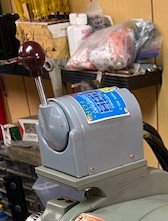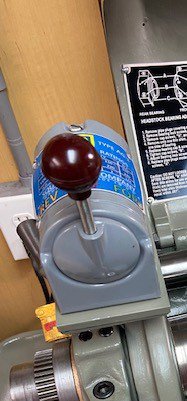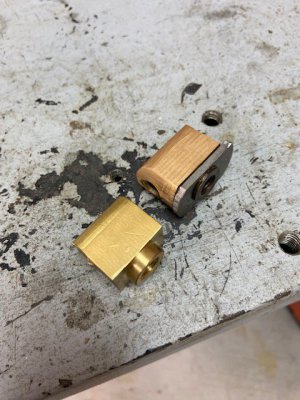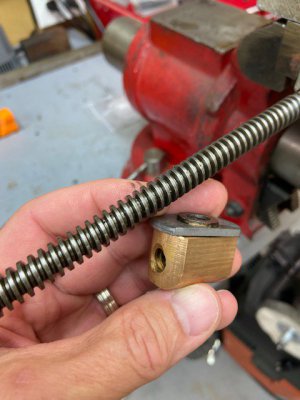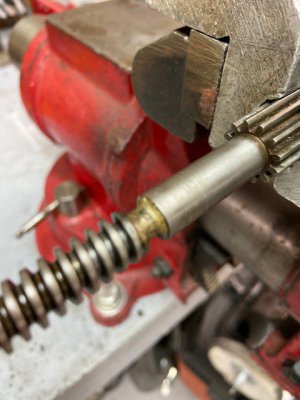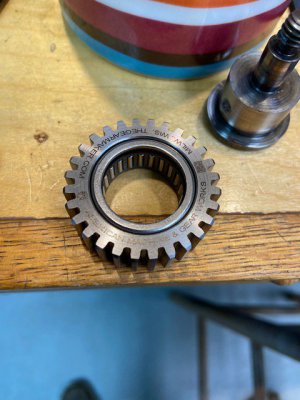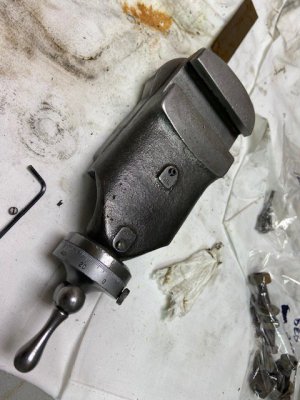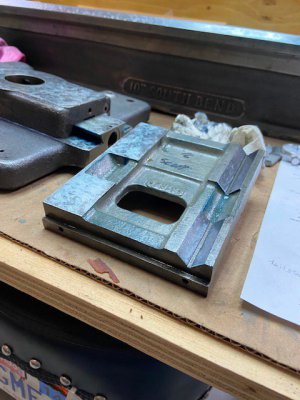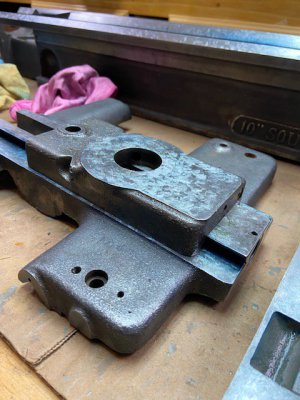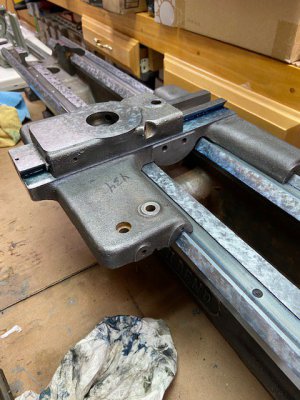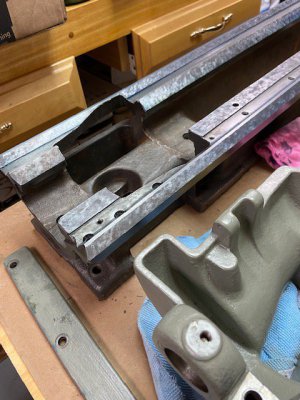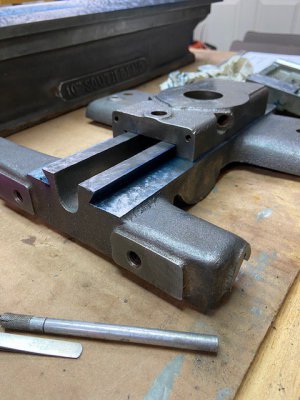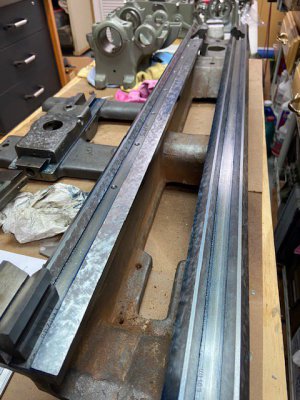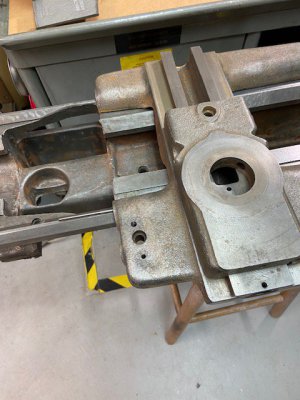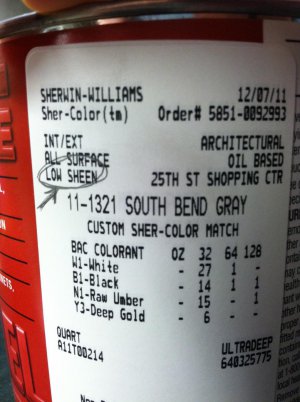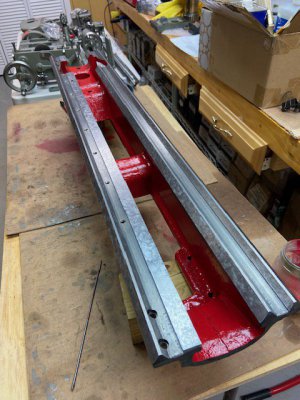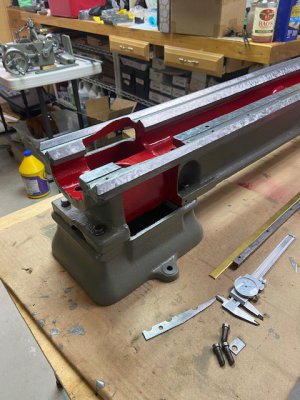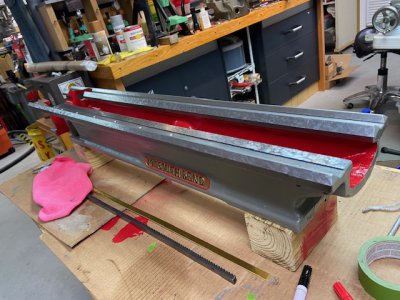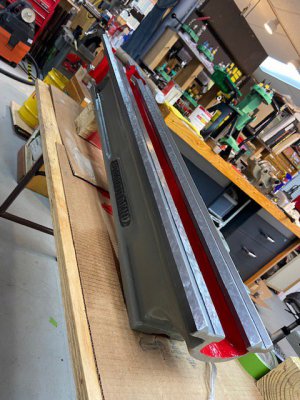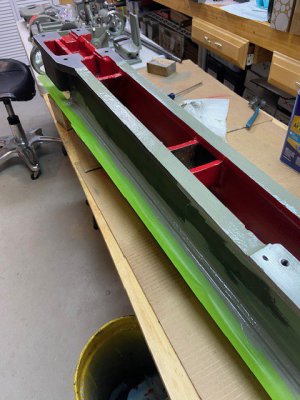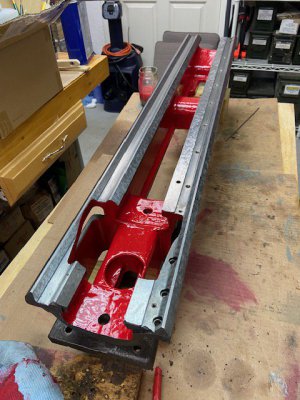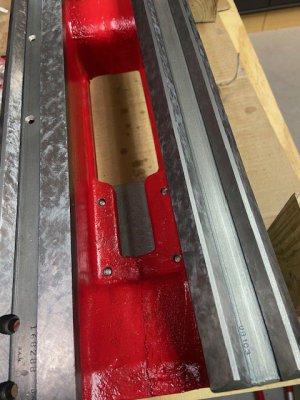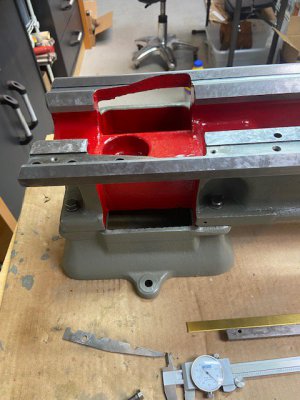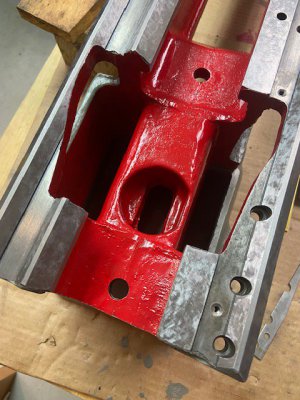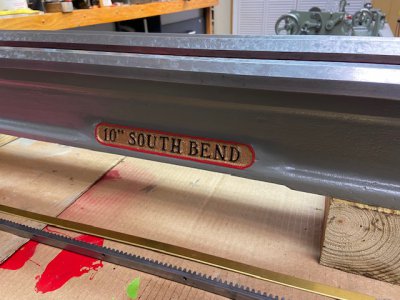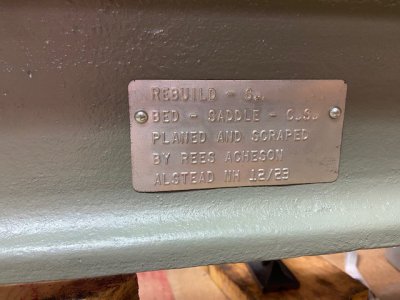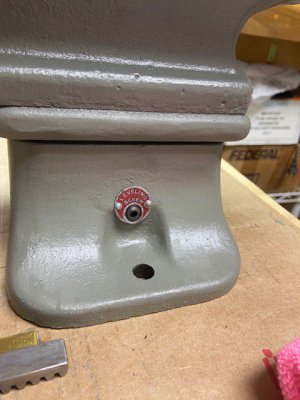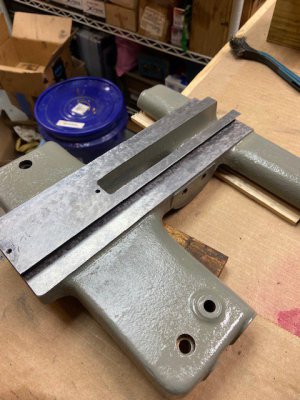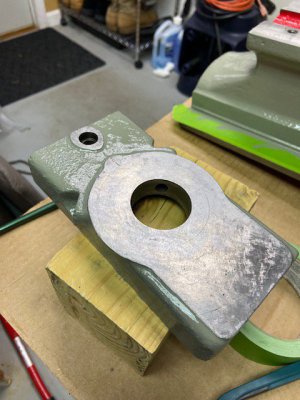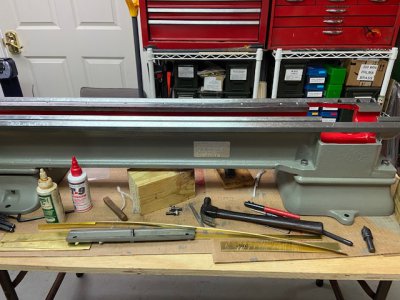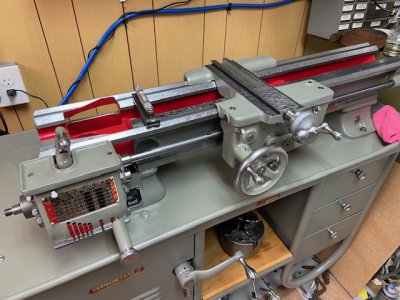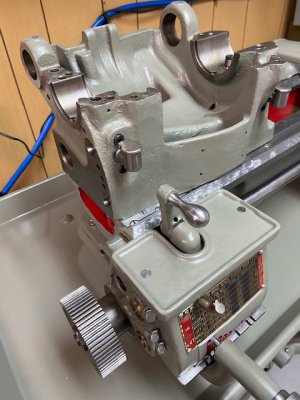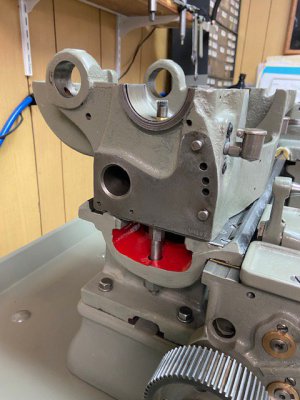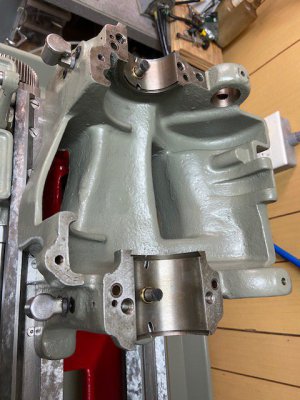All throughout the rebuild - small problems (or sometimes bigger ones) would crop up. I found that my best course of action was to stop walk away and just think about it rather than trying to fix it immediately - this approach saved me a lot of frustration...simply put, take your time. One such instance was actually a blessing in disguise. When I was reassembling the reverse lever unit, I went to tighten the nut that holds one of the twin reversing gear studs. I barely put any pressure on the wrench and the threaded stud sheared off. %$#*&@!! In addition the brass locking handle had at some point in time long ago been broken off and brazed back together - it didn't look great. I ended up finding a complete assembly for short $ and was able to cannibalize it for a new brass lock, better condition studs for the twin reverse gears and at the same time I upgraded those gears with a set of roller bearing units made by American Machine & Gearworks (exquisite gears BTW).
Also - any small spring (i.e. detent in the gearbox, back gear tension adjustment etc were replaced with new springs. In addition every lock screw for any type of adjustment - i.e. dials, were fitted with new brass shoes.
Another problem cropped up and I am embarrassed to even detail it. In rebuilding the cross slide and the compound - my goal was to reduce the backlash that I experienced - on the order of .015 - .020". The threads for both assemblies seemed to be in pretty decent shape, so my assumption was that the bronze nuts were worn. I was able to order new ones and the compound tightened up immensely - down to .005-.006" When I went to test fit the nut on the cross slide - it wouldn't fit. The nuts were also very different with a spacer under the one that came out of the machine. My knee jerk was that the vendor sent me the wrong nut. Before I called him - I set about determining exactly what the problem was - maybe the minor dia was too small? I looked and checked and looked again...no idea. I reached out to a guy that rebuilds these assemblies and he asked for pictures. His determination was that someone had in the past brazed a new threaded portion on to the pinion shaft. After that I went and checked the pitch....Bingo...the threaded portion had be changed from 10tpi to an 8tpi thread - which (HUGE DUH for me) explained why any feeds in my cross slide were always off - I made a lazy assumption years ago that it was the result of worn parts - so I always snuck up on my final dimension. Not even taking the time to think that it doesn't even make sense.
So, now I am faced with trying to find a new CS pinion and at this point it made sense to upgrade to the large diametrical / direct reading dial. SB Ted came through again and furnished a complete assy -nut, pinion, dial , handle etc. I was able to also source a large dial assy for the compound. This one had issues - the acme threaded portion had a slight bend where it intersected the pinion shaft. I was able to correct this with a jig that I put together and using gentle pressure and dial indicators, (VERY difficult to bend BTW...) I got the bend reduced to less than a half thou. It functioned before but had a slight bind on rotation - once straightened, zero bind - smooth as glass. Both the CF & Compound have backlash under .002"


